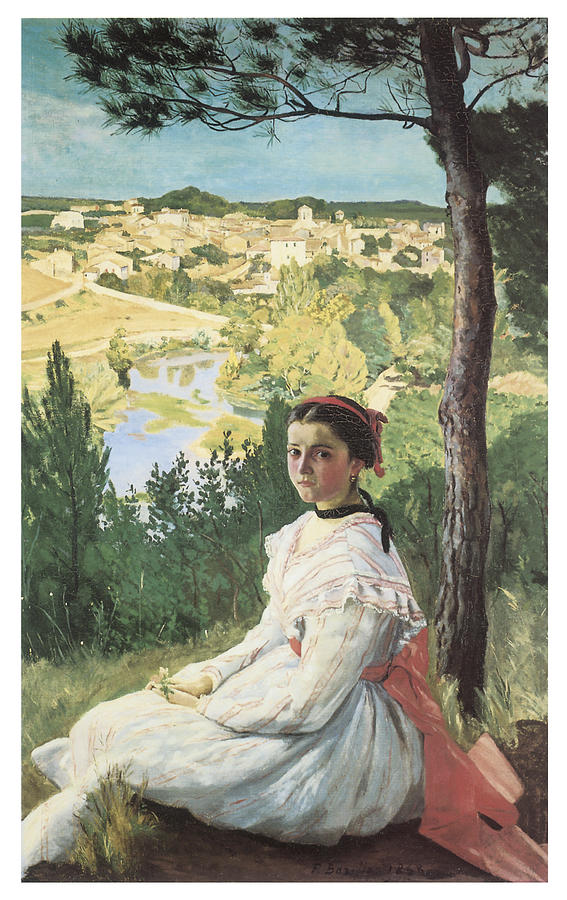
© President and Fellows of Harvard College / DR For each work, you have access to the complete descriptive entry.Cambridge, Massachusetts, Fogg Art Museum We will not make the list of the doubtful works here, but it seems important to indicate that there are paintings signed "Bazille" that appear to be contemporary with the artist.All Frédéric Bazille's works published are presented here in a chronological order.

Some paintings have been submitted to us, whose attribution we have rejected others are known to us only through bad photos. Several are mediocre paintings others, better ones, are foreign to his technique as well as to his spirit.

It remains to say a few words about a final group of works whose attribution to Bazille is false or at least uncertain. There are likely some that escape us which the future will perhaps reemerge. Neither his correspondence nor family recollections provide a complete list of Bazille's missing works. This is the Jardinière, a painting for which a preparatory drawing also appears in this album, Etude de personnage. Another project is listed by Bazille on a page in the same album, Miscellaneous Inscriptions. For example, on July 17, 1865, he writes he is considering doing a portrait of his cousin Pauline and in April 1866, he declares himself ready to do that of his brother Marc, for which there is apparently a preparatory drawing, Portrait de Marc Bazille. In addition, we don't know what became of certains projects Bazille mentions in some letters. Sarraute also provides details about another painting, Enfants déguisés en mariés: the painter Vallotton is said to have owned it thinking it might be by Renoir, he then submitted it to him, and the latter identified it as being by Bazille. Others works have a probable existence. Thus Marc Bazille speaks of a Bouquet de lilas which, we know, was stolen and then was returned by Villa's mistress in 1864 of a portrait of his friend Theulier of Narcisses jaunes given to Maître in 1868 an unknown painting that belonged to Guillemet and mentioned, according to Sarraute, in a letter from Roger-Marx to Marc Bazille and another given to Mme Rolina, mentioned by her, again according to Sarraute, in a letter of September 26, 1871. Later, it mentions: a portrait of an unknown lady, completed before July 1866 a portrait of Monet and a large composition depicting "two women of natural size arranging flowers" - both of which he was working on in April 1867 - and another painting, Gertrude et le père Lapin, which was at least begun in Summer 1870. On March 22, 1863, Bazille writes about his very first painting, a copy of a Rubens painting in the Louvre Museum. His correspondence, however, gives us some informations about those whose existence in the past is certain. Several of Bazille's works have disappeared and remain untraceable today. There is every reason to believe that other discoveries, as it has been the case since the publication of our 1995 catalogue raisonné, will be added to this list and thus perpetuate his fame.

The story of Bazille's work will probably go on. Important: as can be verified, many works, sometimes major ones, escape Bazille's correspondence. No particular explanation can be found about it. Many of the paintings are neither signed nor dated, including The Improvised Field Hospital, the Studio on the rue de Furstenberg, Frédéric Bazille with a Palette, the Studio on the rue Visconti, or the Portrait of Alphonse Tissié. This does not prevent other museums from possessing important and significant works, particularly in the United States. For public collections, the Fabre Museum in Montpellier largely comes out, followed by the Orsay Museum.

More than 80 paintings are included in this part of the digital catalogue raisonné, divided for two third in public collections and one third in private ones.


 0 kommentar(er)
0 kommentar(er)
